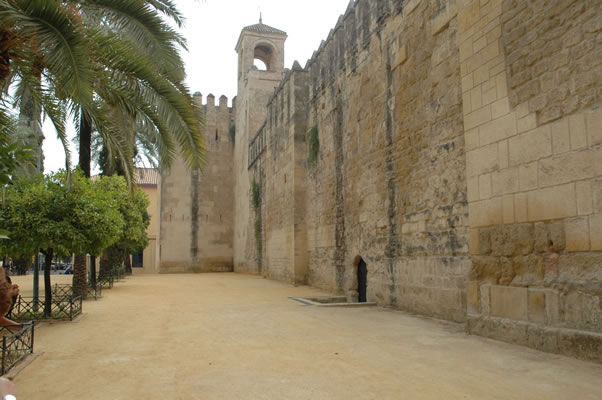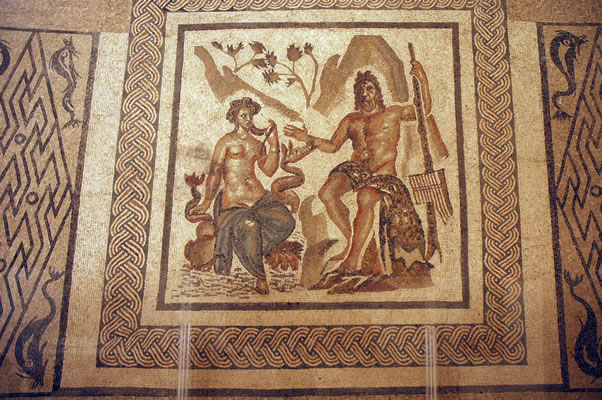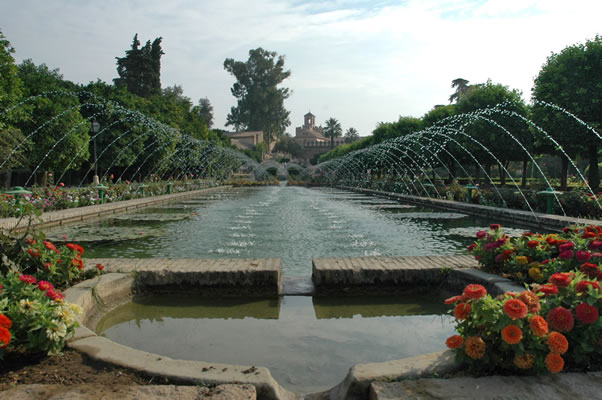
The Alcazar palace was built in the 13th century by King Alfonso XI, and until the late 15th century, the kings of Spain used the Alcazar as a royal residence (it takes its name from the “Catholic Monarchs“, Ferdinand and Isabella). The palace has two courtyards and Arab baths.

On display in the Inquisition Tower are impressive 2ndC Roman mosaics-discovered in Corredera Square-and a 3rdC Roman sarcophagus carved from one piece of marble.
The renaissance gardens, refreshed by abundant fountains and pools, are in Arab style. Statues of the kings of Spain are contemporary.

An old Visigoth fortress, strategically placed along the Roman walls, the Alcazar castle overlooked the Roman bridge and was re-built by emirs of the Damascus Caliphate. During times of political instability, it protected the residence of the emir or caliph, who-at the height of Al-Andalus-enjoyed palaces, gardens, baths and the West’s greatest library in a compound that was much larger than today.
After the conquest of Cordoba in 1236, Alfonso XI built the present palace within this Acazaba fortress, which was later used as a royal residence by Spanish monarchs such as Ferdinand and Isabella. The other parts of the extensive grounds of the original Alcazar were donated to the bishop, the Order of Calatrava and powerful nobles who had assisted in the re-conquest.

This castle was vital to Cordoba during the civil war between Henry IV and his brother, and its defenses were adapted with the introduction of gunpowder. The main tower, now called the Inquisition Tower, was built during this time. Ferdinand and Isabella donated the castle to the Inquisition in 1482, and it became an administrative and ecclesiastical center in the order’s effort to discover false converts to Christianity, mostly Jews who had decided accept exile in 1492. In 1810 it was turned into a garrison by Napoleon’s invading troops, and in 1821 the city converted it into a jail. The government opened it as a national monument in the 1950s.

Because of its long and complex history, it is difficult to accurately date many of its elements. Although many appear Islamic, they are from different stages of Christian occupation. Some tourist guides describe the gardens as from the caliphate, yet they are renaissance with 18th and 19th century additions; the Arab baths on the lower level of the palace were built by King Alfonso XI, proof of the profound influence that Moorish culture had on Spanish architecture.
From legacy HTML site: Photo Essay on Alcazar
